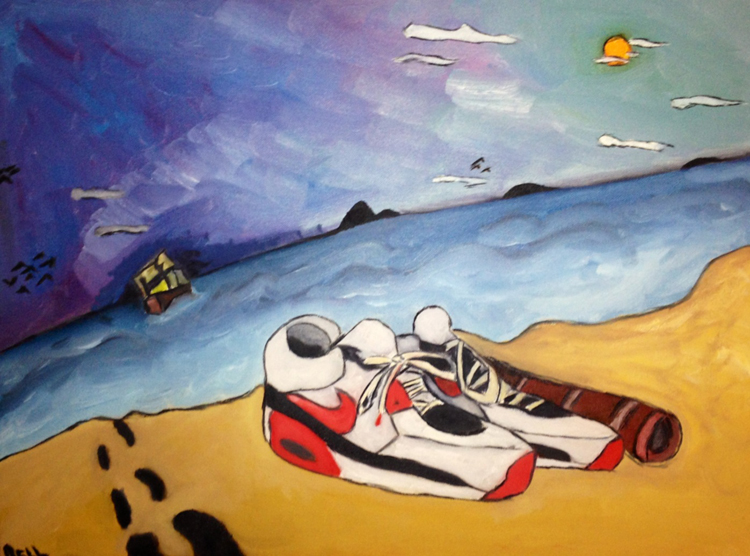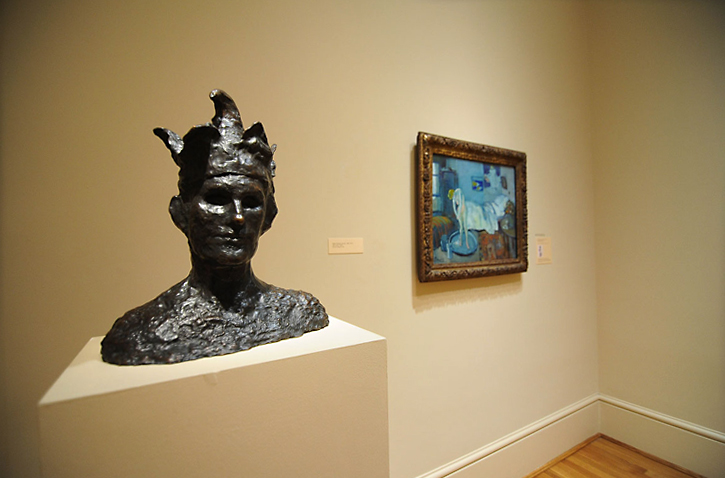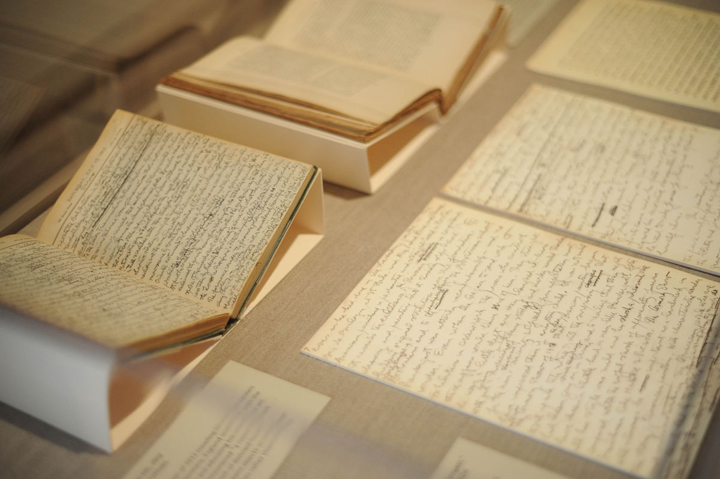In this series, Young Artists Exhibitions Program Coordinator Emily Bray profiles participants in the 2013 James McLaughlin Memorial Staff Show. Join us for the Staff Show reception on October 10, from 5:30 to 8 pm!
A DC resident all of his life, Laurel Simon has lived around the urban lifestyle. After graduating Drew University with a Bachelor’s in Studio Art, he left with a heightened sense of the creative world around him. He is committed to art, with a focal point of oil on canvas paintings. Laurel relies on sneakers as the subject and portrays them in any fashion; be it on canvas, wood, or even as alternative sculpture. His priority is to complete narratives with sneakers, which come in all shapes, colors, and sizes and tell their own stories. In doing so, he hopes to display sneakers as an important part of not only urban fashion, but our lives.

Laurel Simon, AirMax: left.for.dead, 2013, Oil on canvas
What do you do at The Phillips Collection? Are there any unique or interesting parts about your job that most people might not know about?
I work as a Museum Assistant. The job requires an extensive application of how to navigate through the building. Once that is mastered, the job becomes more enjoyable; each “building” is its own world, each “floor” is its own island.
Who is/are your favorite artist/artists in the collection?
Edgar Degas is one I favor strongly; his Study Dance Rehearsal piece on view currently is a small yet detailed piece of work with a simple narrative. That and his other works of the dance make him a fine artist to focus on and learn about.
What is your favorite gallery or space within The Phillips Collection?
The Armory show features classic work from those of the avant-garde. That, paired with the Laib Wax Room, makes this area my favorite.
What would you like people to know about your artwork on view in the 2013 Staff Show (and/or your work in general)?
AirMax: left.for.dead is a piece I completed early this year. My idea was to add a narrative to a subject I mainly focus on: sneakers (shoes or “kicks”). My goal was to make the viewer fully interpret the scene; did someone high-tail it out of there, leaving behind some prized possessions? Was this person stranded on an island and found solace in an escape? Does this symbolize what we all go though in life: leaving something and moving on? I hope that people discuss with themselves what they think the motive in the story is as they look at the myriad of colors, the cel-shaded motif, hints of Cubism, Impressionism, and the emphasis on a popular brand of footwear.
The 2013 James McLaughlin Memorial Staff Show will be on view September 23, 2013 through October 20, 2013. The show features artwork from Phillips Collection staff.
Emily Bray, Young Artists Exhibitions Program Coordinator



